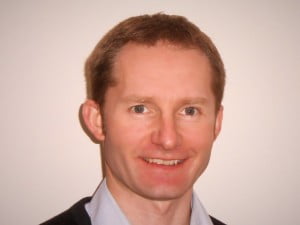Human Lean – Standardisation Creating a Talent Hot Bed
In a nutshell: The standardised work we are all so familiar with as being a cornerstone of a Lean philosophy does not produce quality, reliability and repeatability, it generates world class skill and the basis of a talent hot bed. Understand the process of world class skill generation and give standardisation a meaning.
I have spent more time than I care to remember working on, developing and promoting the benefits of standardised work. The power of knowing the expected outcome of any process in terms of quality, quantity and ultimately cost, in combination with the ability to spot abnormalities against that standard, thus giving rise to that all important assurance and potential problem solving, improvement opportunity is quite simply immense. I am sure there are many of us out there that have all done the same.
I also know that anyone who has tried to implement standardised work (outside of Toyota) will have most likely have also faced the same barrage of resistance that comes with implementation: This is the way we have always done it; why do I need to do it differently?; I am not writing down what I do that is my skill; You are trying to devalue our jobs!; I know what I am doing, why do I need to write it down?; This is just creating bureaucracy we don’t need; I see how this may work in manufacturing but there is no need in offices? and the list goes on…My conclusion after years of approaching standardisation with an organisational output view (a standardised chart of some description, that everyone must follow and if we follow it, the benefits will rain down on us), was that I was missing an opportunity to create a fuller picture of the power of standardisation by talking about the organisational input view – what was happening to the human being? Standardised work does not create human robots, it creates world class skill and the basis of a talent hotbed. How? Simply, it supports the way our brain acquires and hones skill. Some of those talent purists out there will struggle with this proposition, as they see standardisation is an anathema for innovation and creativity. For me, the two go hand in hand; world class skill precedes innovation and creativity, if you are asking for an individual to channel that creativity and innovation in a narrow, defined way around their current skill, as is done with a kaizen philosophy.
Electrical Pulses, Wires and Insulation
From that point on, every time you have that thought or repeat that same action, your brain induces a chemical reaction, sending a pulse down that same wired connection (dendrite). The more you repeat it, the stronger the connection and the less resistance. Overtime, this means your reactions improve, you do thinks quicker and almost without conscious effort.To understand this proposition in detail, we need to understand a little bit about how our brain works. You see, whenever we have a thought, or do something physically, our brain cells (or neurones, as they are officially known) form a linkage with one another, a bit like connecting a wire at both ends to allow an electrical current to flow (these wires are called dendrites). Once that wire is connected, it stays connected forever through a chemical reaction. This is why we can go for years without riding a bike and just start again, as if we had never stopped. As easy as riding a bike!
The next interesting thing I have discovered when researching this topic in more detail, is not just that these dendrites exist but that there is another chemical reaction that occurs in our brain, a reaction that produces a chemical called, myelin. Myelin is like the insulation that wraps the wire; the more myelin we produce, the thicker the insulation and the more direct the electrical impulse through the dendrite. However, what is even more interesting about myelin, is that we only produce it when we are challenged in some way, or when we make mistakes! The greater the challenge and the more mistakes we make, the more myelin we produce and the thicker the insulation, until the point of no return, when a fully insulated, high speed wire with lots of bandwidth is created.
In summary, our brain acquires skill in two fundamental ways:
- By forming wiring circuits, pathways called dendrites that allow precisely timed electrical signals to pass through our nerve fibres with the resultant being movement or imagined movement. The brain does not know the difference between real and imagined experience.
- Myelin is the insulation that wraps these dendrites, creating a super speed information highway. The more we fire the impulse, challenging ourselves to get it right or make mistakes, get it wrong the more myelin we produce and the thicker the insulation. Why? Because the best way to build a strong circuit is to fire it, rectify the mistakes and fire it again, over and over.
Try to memorise each of these two sentences for a minute:
I read a great lean article this morning.
A gtem t nnegl arda rlearic lseo ihitnra.
The two sentences in fact contain exactly the same characters, the reason you can decipher and recall the first sentence with ease is the fact that you have spent years creating the dendrites that allow you to read and more importantly, making many mistakes on the way, allowing you to insulate them with myelin. How did you do this? You chunked the learning.
You learned a series of lines, configured in a specific way to form shapes – letter chunks, you learned to group these letters in a specific way – word chunks, you learned to combine these words in a specific way – sentence chunks. Skill consists of identifying important elements and grouping them in a meaningful way. Psychologists call this chunking.
When you see skill discharged at speed, you do not necessarily recognise these chunks, as it appears as one seemingly effortless fluid motion. However, the reality is the combination of a number of small discrete dendrite myelin wrapped chunks.
This is exactly how some of our sporting heroes have acquired skill in their chosen sport and is exactly what we are doing with standardised work practices. We are chunking the work content into an infinite number of discrete chunks with a high level of granularity. Not just the sentence, but the word, the letter and the strokes. In organisations (such as Toyota) that grasp the power of standardised work, they work on these chunks continually in purpose built facilities such as the dojo or fundamental skill areas, with a focus on developing the minute detail of an individual chunk, slowing it down to a pace that allows individuals to absorb the chunk, for example, manual processes in the manufacture of vehicles or the process of problem solving in a robust way, or the process of equipment maintenance, or the process of behavioural safety interventions, the list goes on. They then continue to develop this skill by building the chunks in sequence at real time speed in the work environment, the employee perfecting each chunk before adding the next to the sequence. Finally, with the full sequence and dendrite built, they add layer and layer of myelin with small minute refinements through the continual challenge and guidance of the coaching leader, gemba (go, look, see) management and process confirmation activities.
Practice Makes Perfect.
A well understood principle within the musical profession is the Mozart principle. Mozart (who started piano at the age of three), estimated that 3,000 hours of practice could produce a reasonably good pianist and to become a professional concert pianist requires 10,000 hours. However, to become a world class musician, requires at least ten years of constant practice and repetition.While a well-used phrase, it happens to be true and is the final element of standardised work world class skill creation.
Let’s put that into industry terms in a fast moving environment such as automotive manufacturing, where we have relatively quick cycle times. Let’s assume I repeat the same standardised work cycle every minute. So that is 60 practices an hour. I work for 7.5 hours so that is 450 practices a day, I work 5 days a week so that is 2250 practices a week. 2250 opportunities a week to create and strengthen the dendrite and insulate it with myelin. Wow! Not all of us work in these environments however, so in real terms the road to world class skill is longer. It is also in my opinion, why some organisations struggle to embed standardised work; they are expecting it too quickly for their particular operating environment. It is this continued practice that is the hard labour of world class skill attainment, there is no easy route.
It is this endeavour that delivers the ultimate stage of perfection, with one’s ability to feel the process, this is world class skill, a heightened state of alertness and focus with extreme attention to detail. A place where the finest of margins matters, a place where perfection exists and just enough is not acceptable.
In his book, The Talent Code, Daniel Coyle lists some descriptors for this state, words he gathered by asking the world’s best how it felt in their most productive moments: attentive; connected; whole; alert; focussed; tiring; edge; awake, (interesting when you view these words through a quality, abnormality / problem identification lens). Just as interesting are the words he did not hear: natural; effortless; routine; automatic.
So what does all this mean?
The repetitive nature of standardised work with its infinite granularity creates a structure for dendrite creation at many levels. In business terms, this offers a productive output in many dimensions but specifically in: safety; quality; quantity. Here we are not just creating one big dendrite that says fit the widget or process the transaction but a series of super refined dendrites that make each individual chunk of the process skill world class.
It was this realisation for me that created a different perspective of standardisation, the human perspective. A perspective which says I am helping my employees to create world class skill levels and anyone with the right attitude can do it. If I view standardisation, in this way it allows me to have differing conversations within the organisation, with respect to standardisation and what we are doing through its adoption. These are the conversations that allow higher levels of employee engagement when entering into a lean transformation programme. Perhaps more importantly however, it allows me to create a foundation from which talent can be grown and nurtured. A foundation where individuals can be innovative, offer creativity and their kaizen powers can be expressed.
A Final Word?
“It’s not about recognising talent, whatever the hell that is. I’ve never tried to go out and find someone who’s talented. First you work on the fundamentals.” Robert Lansdorp, tennis coach to Pete Sampras, Tracy Austin and Lindsay Davenport.
Mark Gregory Biography

Mark Gregory is the founder and MD of Business Transformation Consultancy, Unleash & Engage Ltd, an organisation whose mission is to “unleash & engage the talent residing within us all.” Today, Unleash & Engage work with some of the world’s top organisations across different industry sectors, helping them to do just that.
Mark has spent many years helping organisations and academia understand the philosophy of ‘Lean’. He is a published author on the subjects of Lean Manufacturing, Leadership and Employee Engagement and is a member of the UK Government task force for Employee Engagement – “Engage for Success.”
Prior to founding Unleash & Engage, Mark spent 15 years in the automotive industry; ten years with Toyota Motor Manufacturing and five years with Ford Motor Company, holding various roles in Engineering, Manufacturing and Quality Assurance. He subsequently spent several years working within BAE Systems Ltd, holding positions such as Head of Lean, Head of Transformation and Engagement and Operations Director within the Military Air and Information business.
Outside of work, Mark’s life is focussed on supporting his wife, Anne and their six children. In between family commitments, Mark tries to keep fit by pursuing sporting activities.
References:
The Talent Code, Greatness isn’t born, it’s grown. Daniel Coyle, Arrow Books 2010, ISBN 9780099519850
They Did You Can. Michael Finnigan, Independent Thinking Press 2007,
ISBN 13: 978-1-78135-004-1
Toyota Kata, Mike Rother, McGraw-Hill 2010, ISBN978-0-07-1635523-3
The Liquid Thinking Survival Guide to Change, Damian Hughes.






